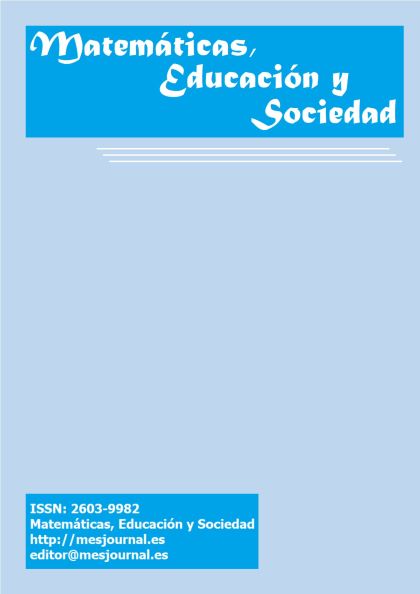On ways of vectorial thinking through problem solving
Main Article Content
Abstract
The purpose of this article is to show broadly what is based on the main author's doctoral thesis on the advances in the characterization of Vectorial Thinking through problem solving in engineering students at the Antonio Nariño University. In the activities carried out for this purpose, a set of challenging and non-routine problems was proposed, where five modes of thought that characterize vectorial thinking involved in the students came to light and are reflected in the rubric for its characterization included among the results of the investigation. As a contrast to the theoretical contribution of the doctoral thesis, and as an innovative element of the article, a generalization of the approach based on the DNR theory proposed by Harel (2021) is shown, where its so-called inhibitory and catalyst shortcuts are discussed in relation to some concepts of the course
Downloads
Article Details
This work is licensed under a Creative Common License (CC BY 3.0 ES)
References
Arcavi, A. (2003). The role of visual representations in the teaching and learning of mathematics. Educational Studies in Mathematics, 52(3), 215–241
Donevska, A. (2016). Thinking modes, with or without technology? 13th International Congress on Mathematical Education. Hamburg.
Dorier, J. L. (1995). A general outline of the genesis of vector Space theory. Historia Matematica, 22 (3), 227-261.
Dray, T & Manogue, C. A. (1999). The vector calculus gap, PRIMUS 9, 21–28
Dray, T & Manogue, C. A. (2003). Using differentials to bridge the vector calculus gap, College Math. J. 34, 283–290
Dreyfus, T. (1991). Advanced mathematical thinking processes. In Tall, D. (Ed.), Advanced Mathematical Thinking, (pp.3-21). Dordrecht/ Boston/ London: Kluwer Academic Publishers.
Guerra, R. y Parraguez, M. (2019). Comprensión del producto vectorial desde los modos de pensamiento: El caso de profesores en formación inicial. Comunicación. XV CIAEM-IACME, Medellin, Colombia.
Harel, G. (2008 a). DNR Perspective on Mathematics Curriculum and Instruction: Focus on Proving, Part I, ZDM—The International Journal on Mathematics Education, 40, 487-500.
Harel, G. (2008 b). DNR Perspective on Mathematics Curriculum and Instruction, Part II, ZDM— The International Journal on Mathematics Education, 893-907.
Harel, G. (2021). The learning and teaching of multivariable calculus: A DNR perspective, ZDM—Mathematics Education, Springer.
Hernández, Sampieri, R., Fernández C. y Baptista L, P. (2014). Metodología de la Investigación. Sexta Edición. México: McGrawHill / Interamericana Editores S.A. de C.V.
Kline, M. (1990). Mathematical Thought from Ancient to Modern Times, Vol. 2. New Ed Edition.
Kwon, N., Bae, Y. & Oh, N. (2015). Design researchon inquiry – based multivariable calculus: Focusing on students´ argumentation and instructional design. ZDM mathematics Education, 47(6)
Marsden, J.E. and Tromba, A.J. (1991). Cálculo vectorial (3a ed.). Wilmington, Delaware: Addison-Wesley Iberoamericana, SA. Ortega, J.
Presmeg, N. C. (2006). Research on visualization in learning and teaching mathematics. In A. Gutiérrez & P. Boero (Eds.), Handbook of research on the psychology of mathematics education: Past, present and future (pp. 205-235). Rotterdam, The Netherlands: Sense Publishers.
Sierpinska, A. (2000). On some aspects of students´ thinking in Linear Algebra. En Dorier, J.L. (Eds.), The teaching of Linear Algebra in question (pp. 209-246). Netherlands: Kluwer Academic Publishers.
Stewart, J. (2018). Calculus of several variables. Early Transcendents. Seventh edition. Brooks-Cole/Cengage Learning.
Tait, G. P. (1873). Elementary Treatise on Quaternions. País: Oxford.
Tall, D. (1990). Inconsistencies in the learning of calculus and analysis. Focus 12 (3 y 4), 49-63
Tall, D. (2013). How Humans Learn to Think Mathematically. Cambridge.
Thompson. S. P. (1914). Calculus Made Easy: Being a Very-Simplest Introduction to Those Beautiful Methods of Reckoning which Are Generally Called by the Terrifying Names of the Differential Calculus and the Integral Calculus. New York: MacMillan Company, 2nd Ed.)
Thompson, P.W & Carlson, M.P (2017). Variation, covariation and functions: fundamental ways of thinking mathematically. In J. Cai (Ed.), Compendium for research in mathematics education (pp. 421-456). Reston, VA: National Council of Teachers of Mathematics.

